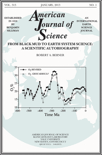
AMERICAN JOURNAL OF SCIENCE
Scope & Guideline
Fostering Insights into Geological Processes
Introduction
Aims and Scopes
- Geological History and Processes:
The journal publishes research that delves into the geological history of various regions, examining tectonic processes, sedimentary environments, and the evolution of landscapes over time. - Geochemistry and Isotope Geology:
There is a strong emphasis on studies involving geochemical analyses and isotopic compositions, which provide insights into the origins and transformations of geological materials. - Paleoclimatology and Environmental Change:
Research addressing past climate changes, their impacts on Earth systems, and the geological record of these changes is a core focus, highlighting the interplay between climate and geological processes. - Mineral Resources and Economic Geology:
The journal includes studies on mineral deposits, resource assessment, and the geological context of economically significant materials, contributing to the understanding of resource management. - Petrology and Geodynamics:
Significant contributions explore the formation, evolution, and properties of rocks, including igneous, metamorphic, and sedimentary types, along with their geodynamic contexts.
Trending and Emerging
- Climate Change Impacts on Geological Processes:
Recent publications have increasingly addressed the effects of climate change on geological processes, highlighting the importance of understanding past and present interactions between climate and geology. - Advanced Geochemical Techniques:
There is a growing trend towards utilizing sophisticated geochemical and isotopic techniques to unravel complex geological histories, showcasing advancements in analytical methodologies. - Interdisciplinary Approaches to Earth System Science:
Research that integrates various scientific disciplines to address complex Earth system questions is on the rise, reflecting a broader trend towards collaborative and holistic scientific inquiry. - Sedimentary Processes and Basin Analysis:
An increased focus on sedimentary processes, including the evolution of sedimentary basins and their response to tectonic and climatic changes, marks a significant trend in recent publications.
Declining or Waning
- Paleobotany and Plant Evolution:
Research on ancient plant life and its evolutionary implications has decreased, possibly due to a greater focus on geological and geochemical studies that provide broader environmental contexts. - Geomorphology Studies:
While geomorphology was once a prominent theme, its representation has waned, potentially overshadowed by more integrative approaches that combine geomorphology with other disciplines such as climate science. - Volcanology and Igneous Activity:
Although still relevant, dedicated studies on volcanic processes and igneous activity appear less frequently, as the journal increasingly emphasizes broader geodynamic and tectonic frameworks.
Similar Journals
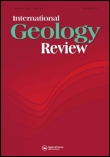
INTERNATIONAL GEOLOGY REVIEW
Unveiling the secrets of our planet, one article at a time.INTERNATIONAL GEOLOGY REVIEW, published by Taylor & Francis Inc, is a premier journal dedicated to advancing the field of geology since its inception in 1959. With its Q1 ranking in the field of Geology for 2023, this journal is a significant platform for researchers, professionals, and students exploring the intricacies of Earth and planetary sciences. The journal has been rated in the 81st percentile within Scopus rankings, reflecting its influence and the high quality of articles published. Although it does not offer Open Access options, the journal maintains a rigorous peer-review process to ensure the publication of original and impactful research. With an extensive archive projected to continue until 2024, INTERNATIONAL GEOLOGY REVIEW serves as an essential resource for those seeking to deepen their understanding of geological phenomena, making it a vital contributor to the global scientific community.
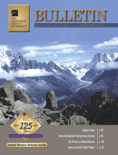
GEOLOGICAL SOCIETY OF AMERICA BULLETIN
Leading the Charge in Earth Science ScholarshipThe Geological Society of America Bulletin (GSA Bulletin), with ISSN 0016-7606 and E-ISSN 1943-2674, is a premier scholarly journal published by Geological Society of America, Inc. Based in the United States, this journal has been a cornerstone of geological research since its inception in 1890, making significant contributions to the understanding of Earth sciences over more than a century. Recognized for its rigorous peer-review process, the GSA Bulletin currently holds a prestigious Q1 ranking in Geology, positioning it among the top 14 journals in Earth and Planetary Sciences in terms of Scopus ranking, reflecting the high quality and impact of the research it publishes. Researchers, professionals, and students alike benefit from its comprehensive coverage of geological topics, including sedimentology, volcanology, and paleontology, which supports the advancement of knowledge in the geosciences. While the journal is not open access, it continues to provide a vital platform for innovative research and critical discussions that shape the future of geology.
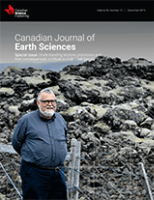
CANADIAN JOURNAL OF EARTH SCIENCES
Illuminating Geoscience Insights for a Sustainable FutureCanadian Journal of Earth Sciences, published by Canadian Science Publishing, serves as a leading platform for the dissemination of cutting-edge research in the field of Earth and Planetary Sciences. Since its inception in 1968, the journal has contributed significantly to the advancement of knowledge through its rigorous peer-reviewed articles and has established itself within the Q2 category in Earth and Planetary Sciences, reflecting its strong academic reputation and research impact. With an impactful ranking of #87 out of 195 in Scopus, it is positioned within the 55th percentile, showcasing its relevance and quality in the scientific community. The journal caters to a diverse readership ranging from seasoned researchers to emerging scholars, providing vital insights into geoscience disciplines and fostering discussions on significant environmental issues. While it is not an open-access publication, the Canadian Journal of Earth Sciences remains committed to accessible research, ensuring that high-quality findings are shared widely within the Canadian and global scientific communities.

Moscow University Geology Bulletin
Exploring Earth's Mysteries Through Rigorous ResearchMoscow University Geology Bulletin, published by SPRINGER INT PUBL AG, is a prominent platform for disseminating critical research in the field of Earth and Planetary Sciences. With an ISSN of 0145-8752 and an E-ISSN of 1934-8436, this journal is well-regarded for its contributions to diverse geological studies and interdisciplinary advancements that shape our understanding of the planet. The journal has established itself in the academic community, particularly noted for its ranking in the Q3 category within Earth and Planetary Sciences as of 2023. Despite its limited open-access options, the Moscow University Geology Bulletin remains an essential resource for researchers, professionals, and students through its well-curated articles and synthesis of geoscientific knowledge. With annual volumes converging from various years, including significant years like 2012 to 2024, it aims to uphold its mission of fostering scholarly dialogue and innovation in the geosciences.
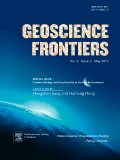
Geoscience Frontiers
Leading the Charge in Earth Science DiscoveriesGeoscience Frontiers is a premier open-access journal that has been at the forefront of disseminating impactful research in the field of Earth and Planetary Sciences since its inception in 2010. Published by China University of Geosciences, Beijing, this journal operates from the Netherlands and has gained recognition for its rigorous peer-review process and high standards of scholarship, earning a distinguished position as Q1 in the Earth and Planetary Sciences category. With a Scopus ranking of 5 out of 195, placing it in the 97th percentile, it reflects the journal's commitment to addressing global geological challenges and advancing our understanding of the Earth’s dynamic systems. As an open-access platform, Geoscience Frontiers ensures that vital research is widely accessible, fostering collaboration and innovation among researchers, professionals, and students alike. By providing a forum for cutting-edge discoveries and theories, the journal plays a critical role in shaping the future of geoscientific research and education.

China Geology
Exploring the Depths of Earth SciencesChina Geology, published by KEAI PUBLISHING LTD, is a leading open-access journal that serves as a pivotal platform for disseminating high-quality research across a wide spectrum of Earth sciences. Since its inception in 2018, the journal has rapidly established itself with an impressive Q1 ranking in multiple critical categories, including Geology, Economic Geology, and Oceanography, among others, reflecting its significant contribution to the academic community. Positioned as a top-tier journal in the Earth Planetary Sciences domain, it ranks #22 out of 321 in Geology and exhibits an admirable impact in sub-fields such as Earth-Surface Processes and Geochemistry and Petrology. China Geology is committed to promoting rigorous scientific inquiry and facilitating the open exchange of knowledge in the geosciences, making it an essential resource for researchers, professionals, and students eager to explore innovative developments and fundamental advances in geology. The journal’s accessibility ensures that critical findings reach a broad audience, thereby enhancing collaboration and driving forward scientific discourse in the global community.
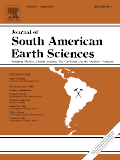
JOURNAL OF SOUTH AMERICAN EARTH SCIENCES
Pioneering Research in South American Earth SciencesJOURNAL OF SOUTH AMERICAN EARTH SCIENCES is a premier interdisciplinary journal dedicated to publishing high-quality research in the fields of Earth-Surface Processes, Geology, and Paleontology, making it an essential resource for scientists and researchers focused on South American geology and its diverse geological phenomena. Published by Pergamon-Elsevier Science Ltd in the United Kingdom, this journal has been instrumental in disseminating groundbreaking studies since 1988, showcasing contributions that push the boundaries of knowledge in Earth and Planetary Sciences. With an impressive Scopus ranking—positioning it in the 74th percentile for Paleontology and 71st for Geology—this journal not only reflects robust academic quality but also its commitment to addressing critical geological challenges in South America. Researchers will appreciate its objective of advancing understanding of geological processes while providing insights into past, present, and future Earth environments. Although available through traditional subscription models, the journal's vast repository of articles enriches the academic landscape, facilitating the sharing of vital research among professionals, students, and geological practitioners.

GEOSCIENCES JOURNAL
Connecting Researchers to Tackle Environmental Challenges.Welcome to the GEOSCIENCES JOURNAL, a pivotal publication in the fields of Earth and Planetary Sciences and Environmental Science, proudly presented by the Geological Society of Korea. Established in 1997, this journal has become a prominent platform for researchers, professionals, and students, offering a rich collection of peer-reviewed articles that explore a diverse array of geoscientific topics. With an impressive Q2 ranking in both Earth and Planetary Sciences and Environmental Science categories for 2023, it stands as an essential resource in the academic community. Though it operates under a traditional subscription model, GEOSCIENCES JOURNAL remains dedicated to advancing knowledge through rigorous research. Addressed from its headquarters in Seoul, South Korea, the journal aims to foster a deeper understanding of geosciences, encouraging innovation and collaboration in tackling today’s environmental challenges.
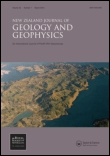
NEW ZEALAND JOURNAL OF GEOLOGY AND GEOPHYSICS
Connecting Scholars Through Groundbreaking Geological Insights.NEW ZEALAND JOURNAL OF GEOLOGY AND GEOPHYSICS, published by Taylor & Francis Ltd, stands as a prominent forum dedicated to the interdisciplinary exploration of geological and geophysical phenomena. With an impact factor that situates this journal in the prestigious Q1 category across key subjects—namely Earth and Planetary Sciences, Geology, and Geophysics—it is a critical resource for researchers, professionals, and students alike. The journal has been operational since 1958 and continues to contribute valuable insights into the complexities of the Earth's processes. Although it does not currently offer Open Access options, its broad readership benefits from an extensive archive of high-quality research findings that span from 1958 to 2024. Located in the United Kingdom, the journal remains a pivotal player in advancing the understanding of Earth's systems, making significant contributions to both academic inquiry and practical applications in the field.
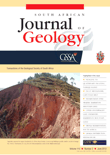
SOUTH AFRICAN JOURNAL OF GEOLOGY
Exploring South Africa's geological treasures.The South African Journal of Geology (ISSN: 1012-0750, E-ISSN: 1996-8590) is a prestigious academic journal published by the Geological Society of South Africa, dedicated to advancing research and knowledge in the field of geology. Established in 1987, this journal has become a cornerstone for geoscientists, featuring a diverse range of studies that address key geological phenomena, particularly within the South African context. With its current quartile ranking of Q2 and an impressive Scopus rank placing it in the 70th percentile among Earth and Planetary Sciences, the journal is recognized for its significant contribution to the discipline. As researchers and professionals across the globe seek to explore and understand geological processes, the South African Journal of Geology stands out as an essential resource, fostering collaboration and innovation in geoscientific research.